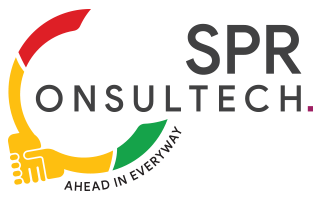The business landscape is more dynamic than ever. To navigate constant change and achieve success, companies are increasingly adopting agile methodologies. At the heart of agile development are agile teams – cross-functional, self-organizing groups that deliver value iteratively and respond swiftly to shifting priorities.
Understanding Agile Teams:
Agile teams typically consist of 5-10 members with a diverse skillset encompassing development, design, testing, and product ownership. This cross-functionality allows them to work autonomously, eliminating the need for handoffs between departments and accelerating the development process.
Here are some key characteristics of agile teams
- Self-Organizing: Agile teams manage their workflow and workload independently. They have the autonomy to choose their tools and processes, fostering a sense of ownership and accountability.
- Iterative Delivery: Work is broken down into smaller, manageable chunks called sprints. At the end of each sprint, a potentially shippable product increment is delivered, allowing for continuous feedback and adaptation.
- Focus on Communication: Regular communication is crucial for agile teams. Daily stand-up meetings, sprint planning sessions, and backlog refinement discussions ensure everyone is aligned on priorities and progress.
- Embrace Change: Agile teams thrive in dynamic environments. They are adaptable and can quickly adjust to evolving requirements or unexpected challenges.
Benefits of Agile Teams:
- Increased Efficiency and Productivity: The streamlined workflow and focus on value delivery in agile teams lead to faster product development cycles and improved efficiency.
- Enhanced Quality: Iterative development with continuous feedback loops allows for early detection and correction of issues, resulting in higher quality products.
- Improved Customer Satisfaction: Agile teams prioritize customer needs and actively seek feedback throughout the development process. This leads to products that better meet customer expectations.
- Boosted Employee Morale: The autonomy, ownership, and collaborative nature of agile teams fosters a more engaging and motivating work environment for employees.
Challenges of Agile Teams:
- Initial Learning Curve: Implementing an agile methodology requires a shift in mindset and processes. Transitioning to agile can be challenging for teams accustomed to traditional structures.
- Communication Breakdown: Effective communication is paramount in agile teams. Without clear communication protocols, misunderstandings and delays can arise.
- Scope Creep: The flexibility of agile can sometimes lead to scope creep, where additional features are added to a project without proper planning or prioritization.
Building a Successful Agile Team:
Creating a high-performing agile team takes dedication and effort. Here are some key strategies:
- Assemble the Right Team: Select team members with the appropriate technical skills, but also consider their communication, collaboration, and problem-solving abilities.
- Provide Clear Training: Invest in training on agile principles, methodologies, and tools to ensure everyone has a strong foundation for success.
- Foster a Culture of Trust and Transparency: Create an environment where team members feel comfortable sharing ideas, raising concerns, and providing constructive feedback.
- Embrace Continuous Improvement: Regularly assess your agile practices and identify opportunities for improvement. Be open to adapting and refining your approach based on experience.
In today’s fast-paced business environment, agile teams offer a distinct advantage. By fostering collaboration, embracing change, and prioritizing value delivery, agile teams can help companies stay ahead of the curve. Investing in building strong agile teams is an investment in the future success of your organization.

